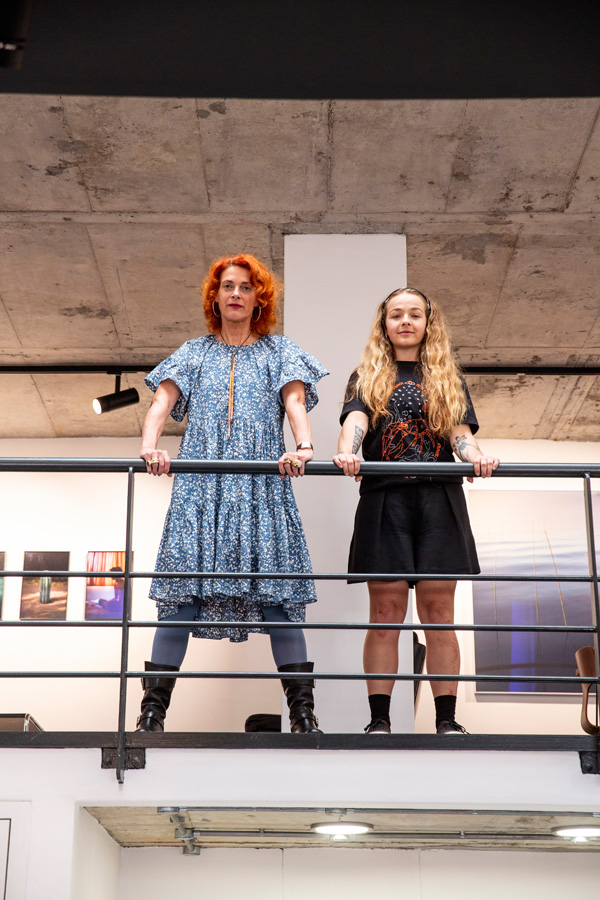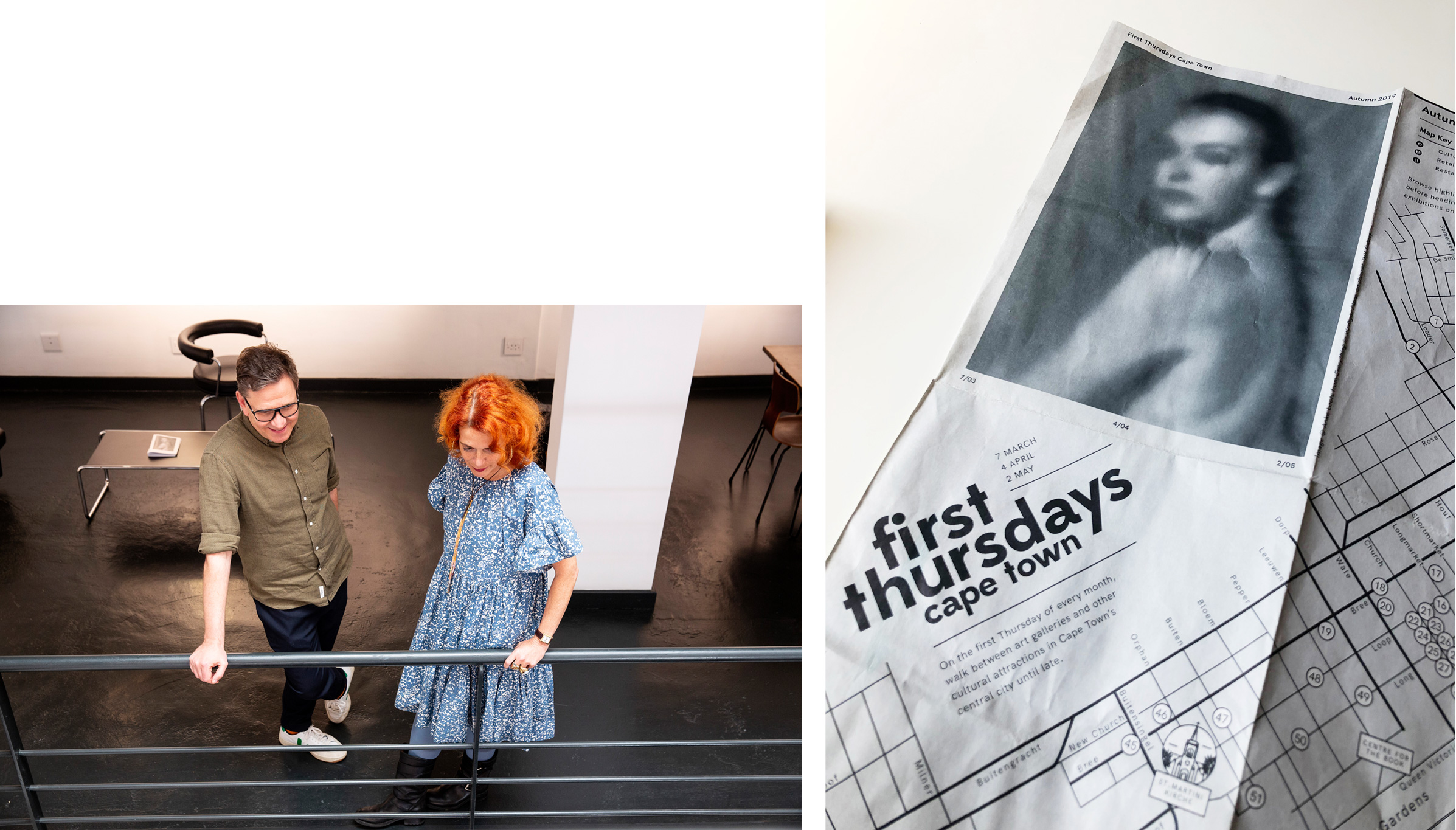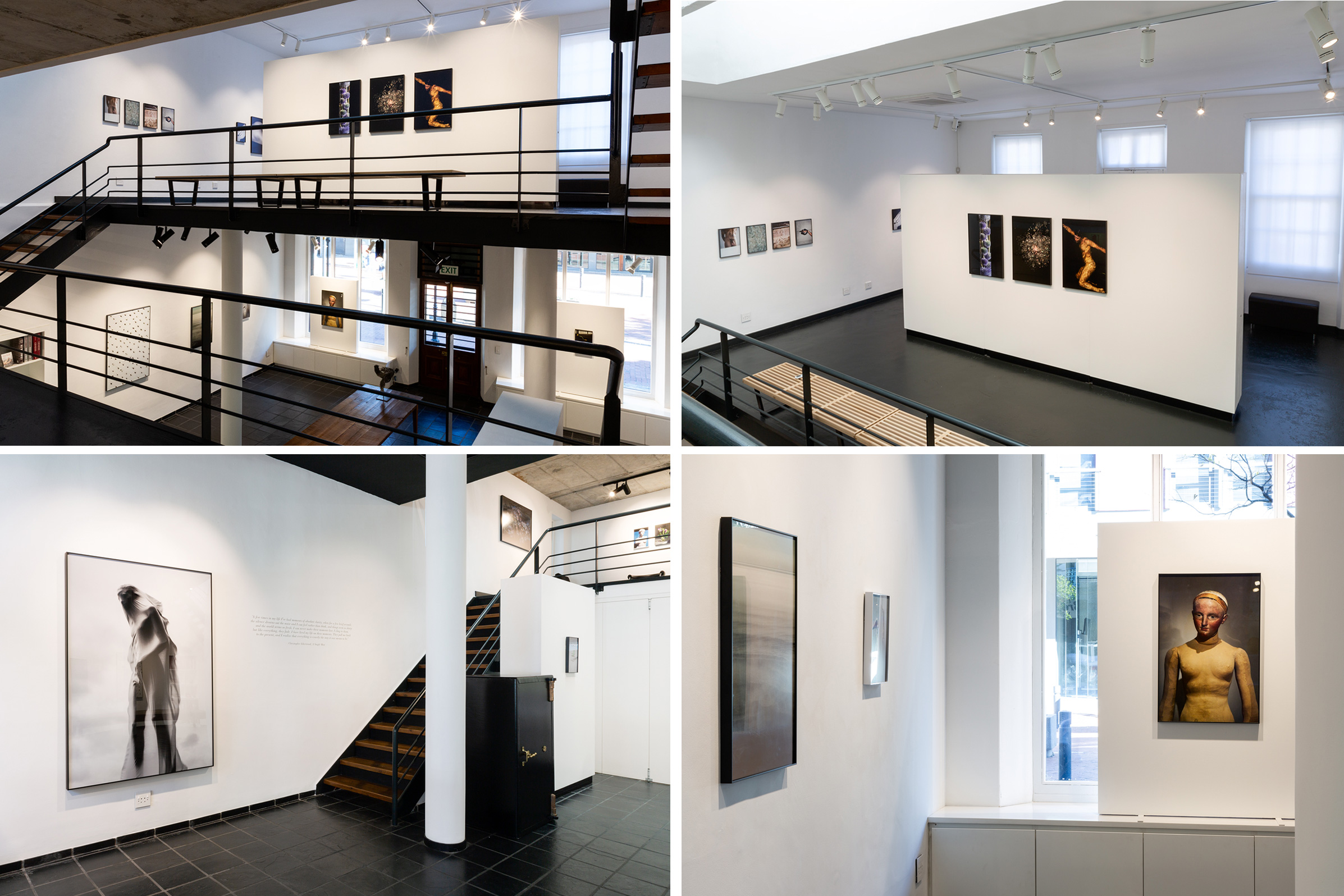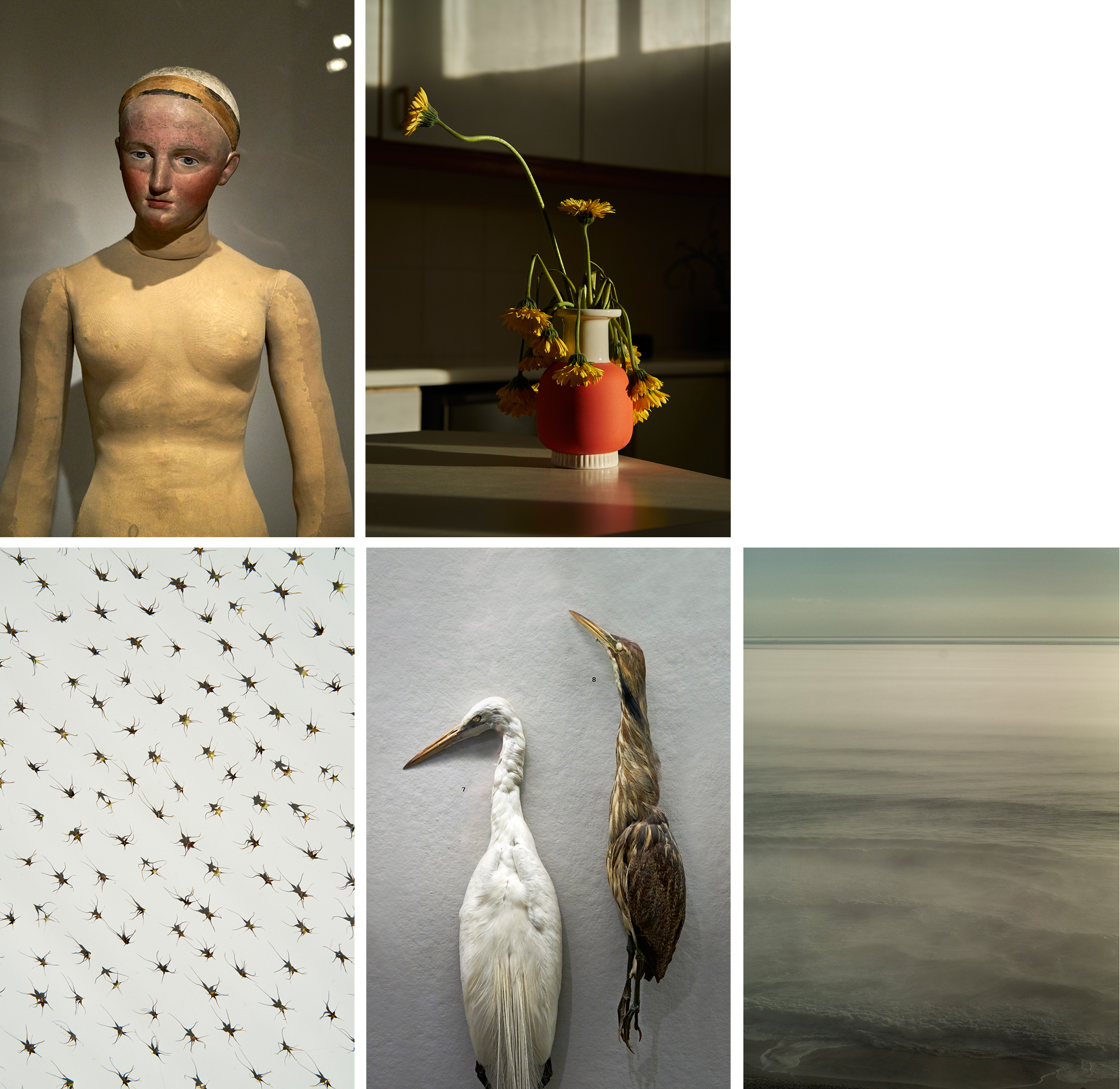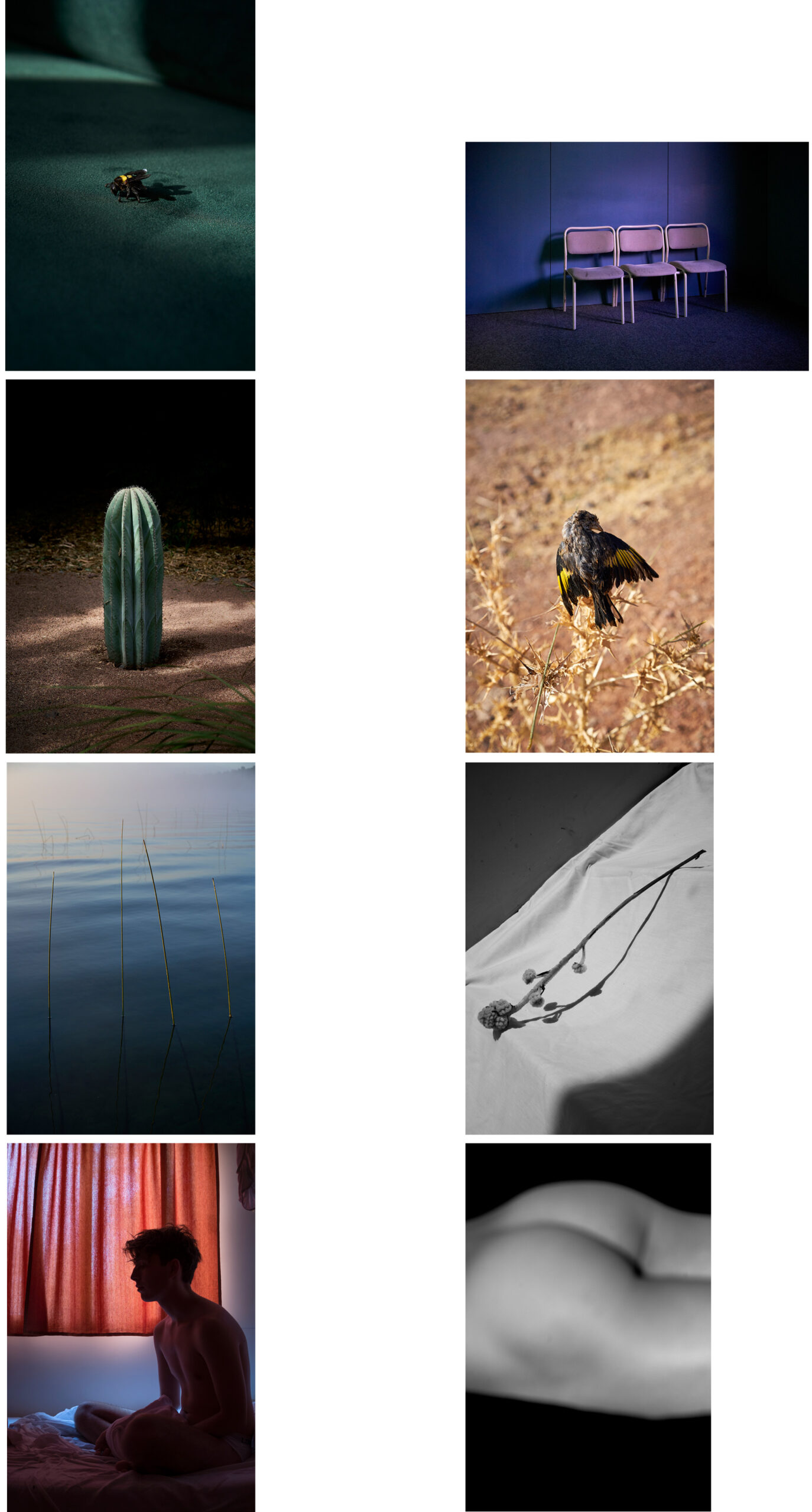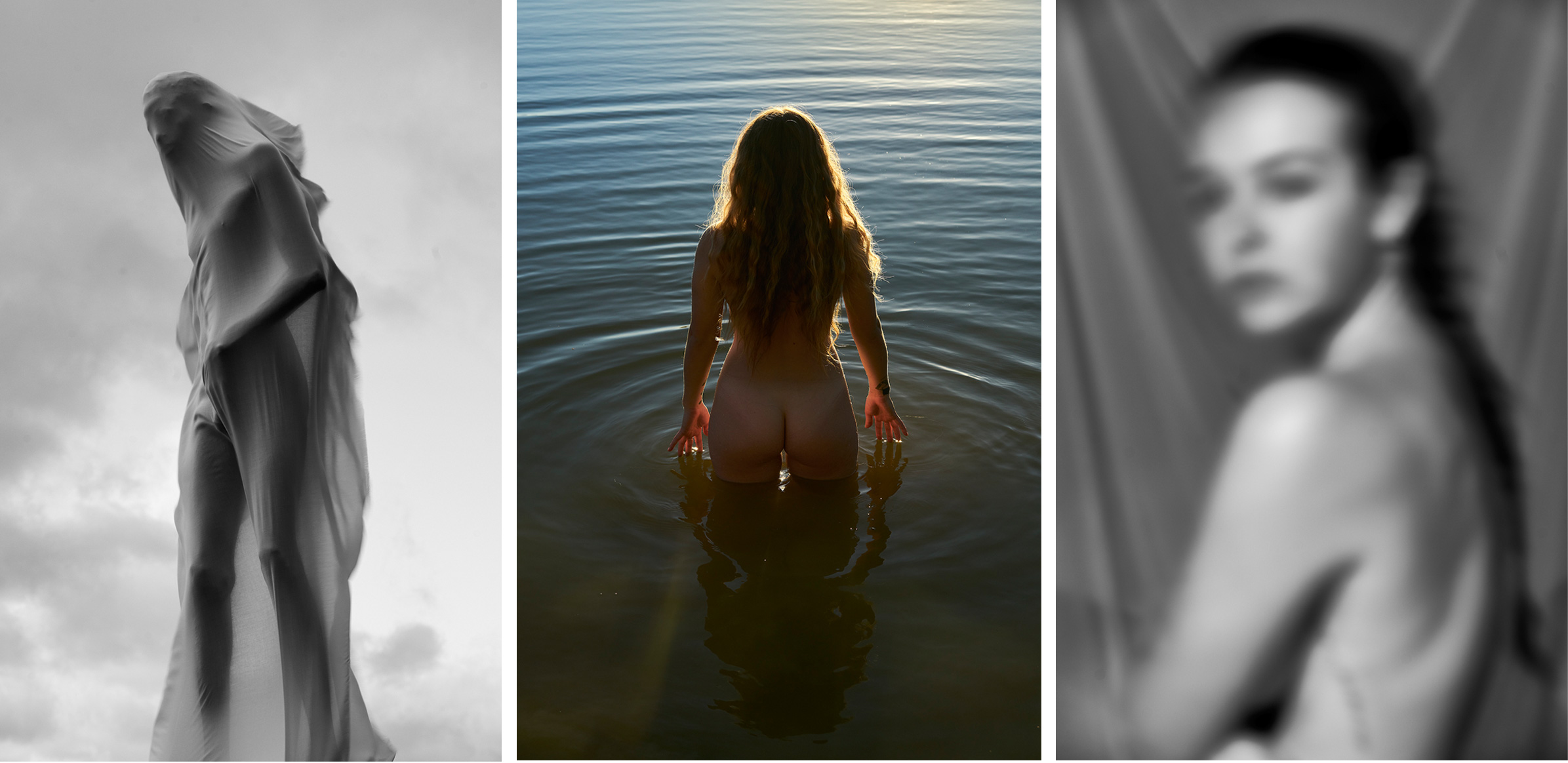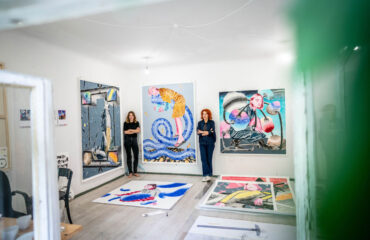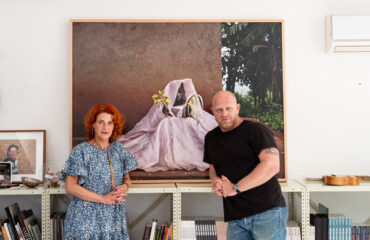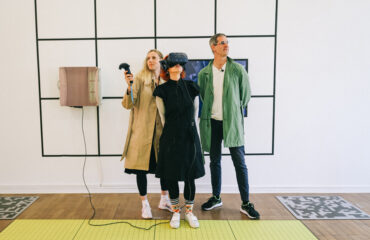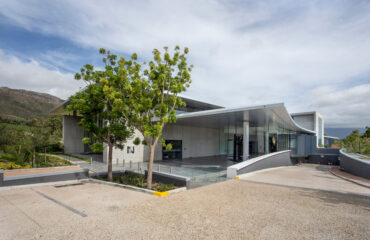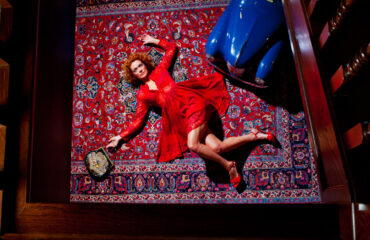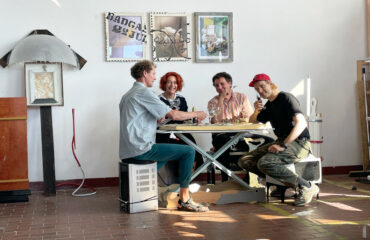Photos: Karl Rogers
Cape Town. I had no idea that the THK Gallery is an exhibition venue founded only eight months ago by – of all people – an inhabitant of Cologne, a person, therefore who just like myself is from the Rhineland. Initially, it was the cover of the current first thursdays cape town* tour guide, which took me to Waterkant Street and thus to Frank Schönau and the artist, whose self-portrait graces the cover of the guide. It is the first solo exhibition of the 27-year-old Anke Loots, over many years the personal and camera assistant of the photographic artist Pieter Hugo, with whom – coincidentally ? – I also have an appointment at the end of the week.
Photo left: Frank Schönau, Photo right:: tour guide. *Every first Thursday of the month the galleries in the city centre of Cape Town stay open until the late evening, inviting visitors to explore.
I get lucky with an exclusive tour. A first glance at the exhibition’s photographs shows that it is not a specific category of the photographs which form the main focus, but that, besides portraits, there are also still lifes and landscape photographs. The visual language as a whole is very clear and condensed. All her motives exude something delicate and poetic. Something feminine. But I cannot yet quite see a contextual relationship. The exhibition appears to show a random selection of beautiful pictures. However, there is a common message, as Anke will explain to me during the course of our walkabout.
Introducing me to the exhibition, Anke says: All my work was created in the last four years, often on my travels with Pieter. Whether it was about photo productions or preparations for exhibitions in museums or galleries, my camera and I were there. This resulted in an enormous bundle. For this exhibition, I first made a video of the entire material, followed by a selection. In this connection it was important to me that the picture is not only meaningful individually, but also within the composition. While we walk about we chat.
A question for a start: I read that at the end of your art direction studies you worked for six years with Pieter Hugo. Was it difficult to find your own imagery, considering this background?
Anke: I think it is always like that. For any artist. For me, for a start, it was mostly about perfecting photographic techniques. How to deal with light, the composition and so on. However, Pieter, from very early on, supported me in critically looking at my pictures not only technically, but also from a content point of view. That is, to find imagery in the sense that I develop my own style. A very difficult process! But it is exactly this analysis which I am recreating here on three levels of the exhibition, so this question may perhaps be answered better at the end.
Installation views
Intrigued, I am looking in detail at the pictures on the lower level. My personal eye catcher is a black and white whole-body portrait in large format of a female-looking silhouette shrouded in a translucent veil before a cloudy sky. On the one hand, she appears to be growing into the sky, because of the low angle shot, on the other hand, her poise appears to reflect a moment of uncertainty. The portrait is surrounded by still lifes of the most diverse themes. An arrangement of small insects of the same kind, which form a delicate, diagonal pattern on a white background; two lifeless birds, almost surreally stretched vertically next to each other; the ocean, which – in a moment of the most calm swell – appears to become one with the horizon; a vintage doll and a still life with flowers. The classic message of the still life – in the sense of the memento mori – does not appear to be the focus. I question Anke more closely.
f.l.t.r.: Space in between, Cape Town 2018; Two birds one stone, New York 2018; View from heaven, Cape Town 2016; Mannequin, New York 2018; Sunned Flowers, Cape Town 2017
Anke: That is correct. While the pictures embody a form of impermanence, they do not do so under the aspect of reflecting on mortality. Rather, I have created a relationship between fundamental questions of photography and philosophical questions; I interpreted the stillness of the still life in the sense of harmony and balance.
That sounds very demanding. Had this idea been defined by you right from the beginning?
Anke: Unfortunately not. As mentioned it was a difficult process. For a start, I realised at some stage, both while taking pictures and then looking through them, I appeared to be driven by the thoughts of the perfect picture. But what was the perfect picture? Beauty composed, or the attempt to catch a moment that was at risk of getting lost? In the search for answers I became aware that both options contained the desire for control and the fear of reality – in other words, the typical crises of life. Understanding this was the first important step to myself and ultimately the road to developing my own imagery. I worked at accepting the negative sides of life as natural and unavoidable. The perfect picture therefore no longer had to reflect beauty in the usual sense, but needed to visualise balance and harmony. All in all a process that gave me freedom.
For instance, here [see the pictures below] I put together groups of pictures that show both the masculine and the feminine. Two sides which in the past I perceived as opposed to each other, but that I have meanwhile accepted as a polarity and a part of myself.
Group 1 left, f.b.t.t.: In the morning, Rome 2016; Still reeds, Cape Town 2017; Jardin Majorelle, Marrakesh 2017; A friend on my couch, Cape Town 2018 _ Group 2 right, f.b.t.t.: At his home; Cape Town 2019; Falling, Cape Town 2016; Bird catcher, Marrakesh 2017; I waited but nothing happened, Cape Town 2018
In the portraits, too, I symbolically retrace my transformative process. On the left, there is still the veil which shrouds an anonymous person, and there is lack of movement. In the middle, I show myself naked back – as a sign of transition – with movement into the water, before I finally turn my face towards the viewer in the most recent portrait.
f.l.t.r.: The light is not inviting us in Cape Town, 2019; Self portrait in water, Cape Town 2019; Self portrait as blur, Cape Town 2019
And why is it blurred?
Anke: With this, I want to undermine the assumed photographic perfection, make lightness visible and also wish to express the onward flow of one’s own continuous developmental process.
Definitely not a casual selection of beautiful pictures, I think at the end. Having done this special walkabout, the exhibition reveals a methodical journey – the personal, meditative journey of Anke Loots – which she uses to simultaneously portray her artistic positioning. It is a view of herself and the world surrounding her, which gives all her pictures an artlessness, an absence of forced composition.
Harmony, balance and clarity is an imagery which is at one with the natural personality of the artist. The title of the exhibition gets to the heart of the matter: Everything in its right place . . .
Further Information
… about the artist:
https://www.thkgallery.com/anke-loots
https://www.instagram.com/ankeloots/?hl=de
… about the gallery:
